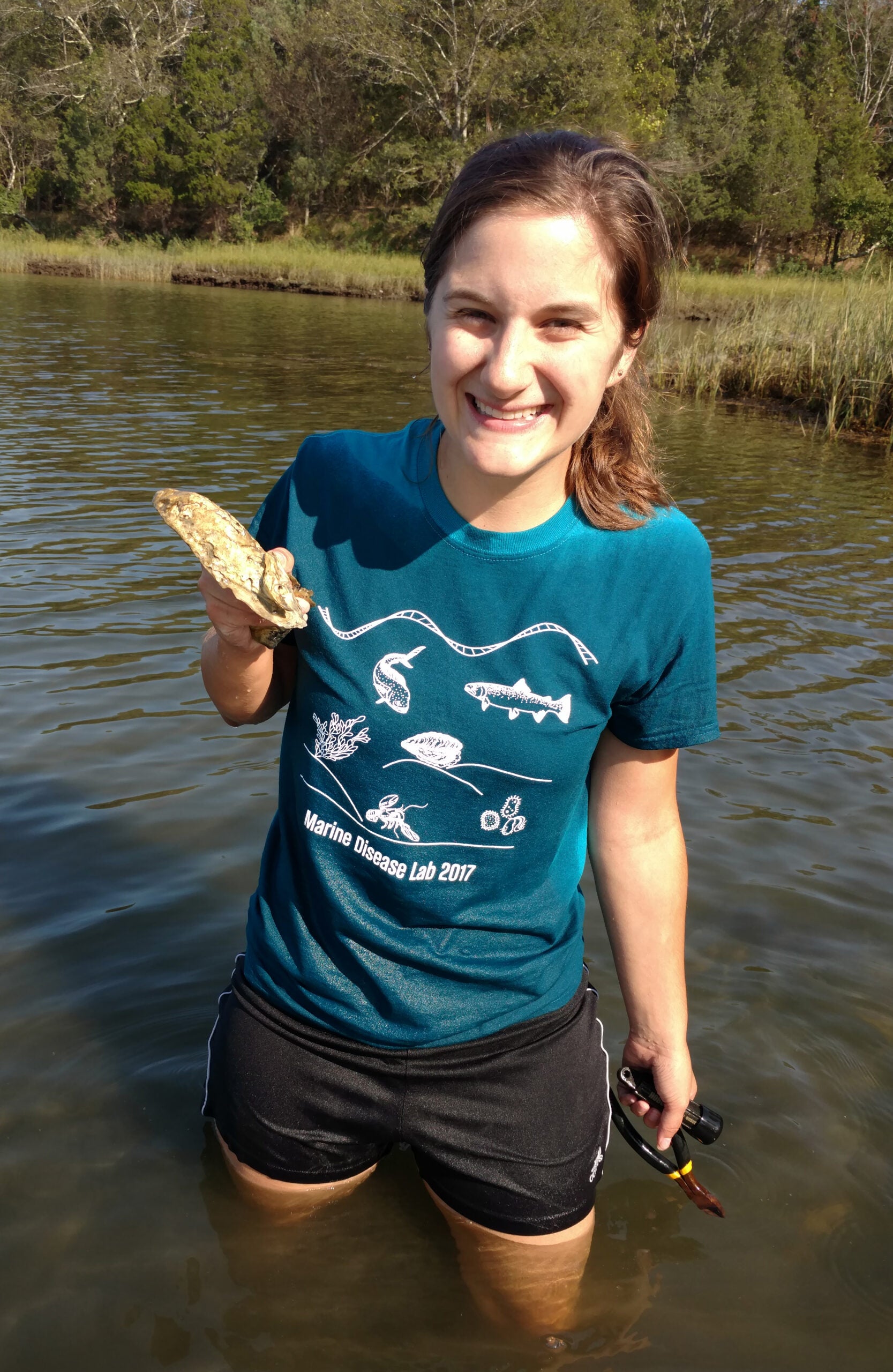NARRAGANSETT, R.I. – April 30, 2020 – When Rebecca Stevick began her doctoral studies at the University of Rhode Island’s Graduate School of Oceanography in 2015, she knew it was going to take at least four years to complete her degree. So she decided to combine the program with another project that she thought might take her equally long – an 18,000-piece jigsaw puzzle that, when completed, was 8-by-9 feet in size.
“That’s how I spent my free time during Rhode Island’s long winters,” said Stevick, a native of Laurel, Maryland. “My goal was to finish the puzzle before the end of my degree program, and I did it, with the help of lots of friends. I had to move all my furniture just to assemble it all at the end.”
Stevick completed the puzzle – and the requirements for her doctorate in biological oceanography – before the coronavirus pandemic struck, and she began a postdoctoral fellowship at the Pasteur Institute in Paris in March. But two weeks after beginning her fellowship research, her lab was closed and she has been confined to her apartment ever since.
“It’s been a bit of a mess,” she said. “I don’t have work for my postdoc that I can do at home, so I’ve been finishing up writing research papers from my time at URI. It has actually been a nice opportunity to focus on finishing those projects, though sitting in my apartment every day means I haven’t had much chance to practice my French.”
Her URI research – in collaboration with URI Professor Marta Gomez-Chiarri, co-adviser Anton Post and scientists at Roger Williams University and The Nature Conservancy – examined how environmental factors in Narragansett Bay affect oyster health and diseases and their associated microbial communities. She also tested if probiotics might boost the microbial community in oyster hatcheries and what particular microbes interact best with the probiotic.
“Oysters are really good at removing nitrogen from the water and clearing pollution, but some of that work is actually done by their associated microbiome,” she explained. “We were looking at the genetic pathways the bacteria were using to do that and which ones are responsible for it.
“We found that those genetic processes were different based on the environmental conditions the oysters were in and which microbes were present in their microbiomes,” Stevick added. “The environment has to be right and the right microbes with the right genes have to be present for oysters to improve water quality.”
She hopes that her research can be applied to efforts to clean estuaries and other waterways.
“If the goal of an oyster reef restoration project is to clean up the water, then we now have a better idea of which bacteria would be able to do that and under what environmental conditions,” she said.
During her four-and-a-half years in Rhode Island, Stevick was especially pleased with the relationships she developed with other scientists around the state.
“The people at URI are really wonderful, and I enjoy the collaborations we have and how willing people were to share their expertise,” she said. “I also really enjoyed working with undergrads and mentoring them during my time there.”
Stevick will spend the next two or three years at the Pasteur Institute studying how microbes in zebrafish help prevent diseases or other pathogens from colonizing the fish.
“Given the pandemic, I’m not sure what science funding is going to be like in the near future, so I’m not sure what my plan is after my postdoc,” she said. “I’d like to eventually run my own lab somewhere, perhaps in the biotechnology industry or a government lab.”
Regardless of where she ends up, she is committed to studying the microbes that play a vital role in a healthy aquatic environment.
“There are millions of millions of these tiny organisms that affect water quality, human health, marine organisms and the air we breathe,” she said. “By understanding these microscopic processes, we can learn more about the world around us and the best way to protect it.”

